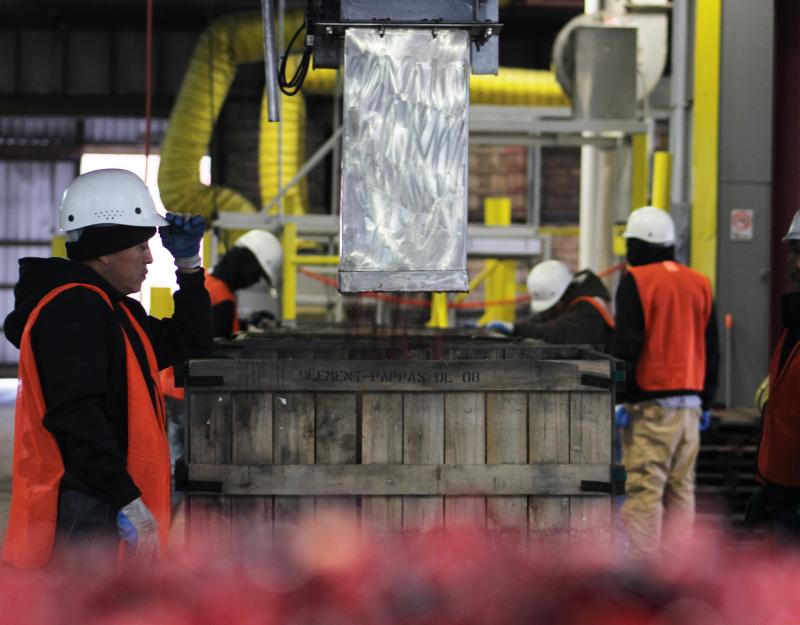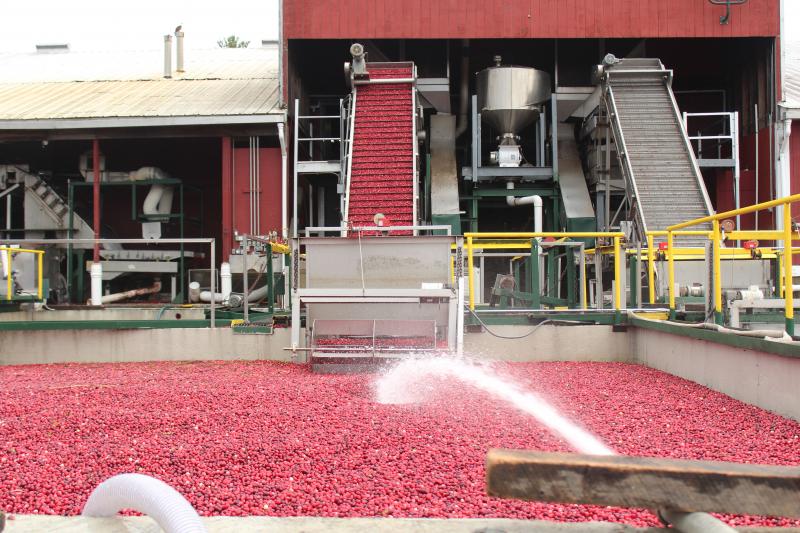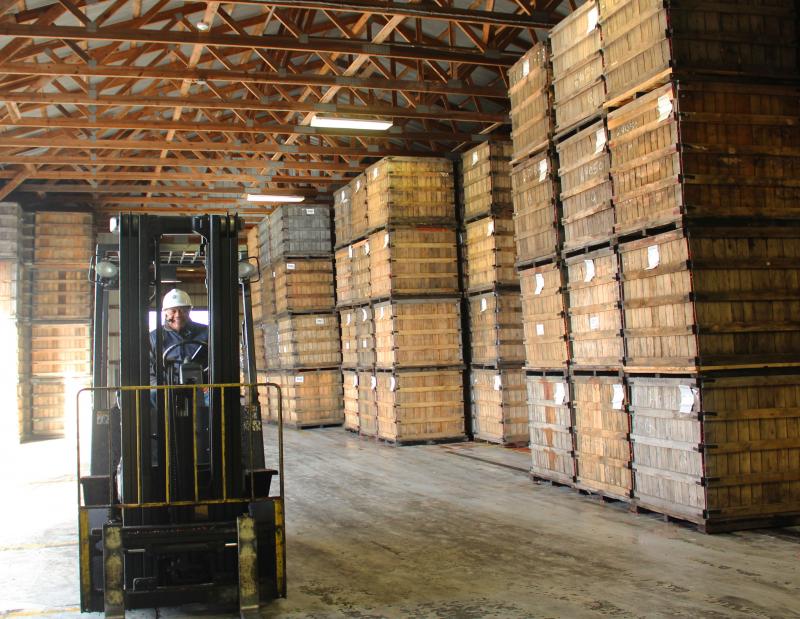Cranberry bogs buttoned up for winter
As cranberry season winds down, workers on the bogs and in the distribution centers will soon catch a break for the season.
"I'll be here until about nine tonight," said Wareham resident Marshall Fernandes on Monday while working at Clement Pappas & Co. in Carver. "That's how it's been for the past five weeks, but it'll be the last busy day. Then it'll slow down and I'll take the winter off." Clement Pappas is a subsidiary of Lassonde Pappas & Company, Inc., one of North America's largest producers of store brand juices, drinks and sauces.
While this year's harvest has been stored, processed or sent to supermarket shelves, industry workers are stepping back as the season ends.
"We will go into a mode where people take time off because they've worked six or seven days a week," said Linda Burke, vice president of marketing and communication for A.D. Makepeace, Ocean Spray cooperative's largest cranberry grower.
The lull occurs before the bogs are prepped for harsh weather. There will be three major steps undertaken on the bogs before winter.
- Flooding - Some bogs will be flooded from late December through early March to protect vines from cold weather.
- Equipment maintenance - Cranberry growers must make their own equipment because larger companies do not make machines suited for the industry, which consists of less than 1,000 growers. Many companies use the winter months to improve, maintain and design their own equipment.
- Sanding - Applying a layer of sand to the vines stimulates growth, improves drainage, and controls weeds. Sanding can be done in three ways: dry sanding is when sand is applied directly to the vines by hand, ice sanding is used if the flooded bogs freeze over, and barge sanding which uses a barge on the flooded bog.
The bogs will be sanded starting in January. Until then, Fernandes will take the winter off. His job at the factory is one of two he keeps in his retirement.
"You have to stay active," he said.
From mid-October to November, when cranberries from the bogs around town and in neighboring areas are harvested, Fernandes and other workers in the industry put in 14-hour workdays.
During this time, they reeled in cranberries using a cranberry boom, sucked the berries into a truck, then transported them to cleaning stations where they were washed, separated from any remaining debris, and packed into crates. The cleaning is important because when the cranberries are sold to companies like Ocean Spray, growers are compensated according to how clean the berries are.
Read more on cranberry growing and harvesting here.

















